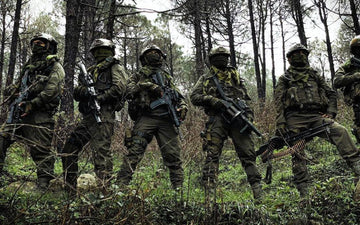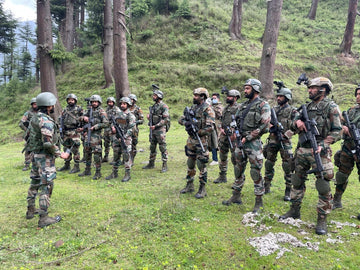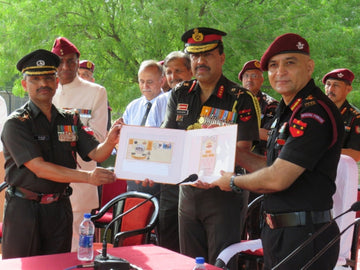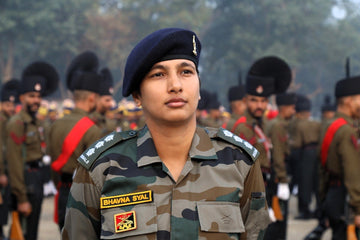The allure of flying, coupled with the noble mission of serving one’s country, makes the journey to becoming a pilot in the Indian Navy highly coveted. With its rich tradition, advanced technology, and vital role in national security, the Indian Navy offers an exceptional career path for aspiring aviators. However, embarking on this journey requires dedication, rigorous preparation, and a thorough understanding of the requirements and procedures involved.
Educational Requirements
To embark on the journey of becoming a pilot in the Indian Navy, educational qualifications play a crucial role. Candidates typically need a bachelor’s degree, specifically focusing on engineering, physics, or mathematics. Here’s a breakdown of educational paths:
- Bachelor’s Degree: Candidates should possess a BE/B.Tech in any engineering discipline from an AICTE-recognized institution or university, achieving a minimum of 60% marks [2][5]. This degree not only equips candidates with technical knowledge but also helps them understand complex aviation technology.
- 10+2 Education: Alternatively, individuals who have completed their higher secondary education (10+2) with strong performances in science subjects—particularly physics and mathematics—may also be eligible through specific entry routes offered by the Navy [2][5].
The importance of a scientific and technical foundation cannot be overstated in the aviation sector, as it enhances a pilot's ability to operate and troubleshoot sophisticated aircraft systems effectively.
Age and Marital Status
Age limits are rigid to ensure that candidates are physically and mentally aligned with the Navy's rigorous training programs. The following age criteria apply:
- For NDA: Candidates must be between 16.5 to 19 years of age. This option is ideal for students who wish to enter the Navy directly after completing their 10+2 [2][5].
- For CDS: Graduates can apply between the ages of 19 to 24 years through the Combined Defence Services (CDS) exam, allowing for selection into the Indian Naval Academy (INA) [2][5].
Moreover, candidates are expected to be unmarried at the time of their application, reflecting the Navy's focus on full commitment to training and service.
Entry Paths
There are several pathways through which one can join the Indian Navy as a pilot. Each entry point has its specific requirements and selection processes:
National Defence Academy (NDA)
The NDA serves as a premier institution for training young men to become officers in the Indian Armed Forces. After clearing the NDA entrance examination, candidates undergo three years of rigorous training, which includes both academic instruction and physical conditioning. On successful completion, they are commission qualified to pursue their specialization, including pilot training [2][5].
Combined Defence Services (CDS) Exam
Graduates in the age range of 19 to 24 years can take the UPSC-conducted CDS exam. Successful candidates undergo training at the INA, leading to a commission as a naval officer [2][5]. This route is particularly suitable for those looking to transition from academic learning directly into military aviation.
Indian Naval Academy (INA)
This pathway allows graduates to apply directly for officer training, bypassing earlier stages if they meet specific qualifications and criteria [2]. The INA is known for its comprehensive programs that prepare candidates to handle naval operations in a variety of situations.
Indian Navy Entrance Test (INET)
The INET is a computer-based verification process that evaluates candidates' analytical, mathematical, and comprehension skills. It consists of multiple-choice questions covering areas crucial for a pilot’s operational efficiency [2]. This test has become a vital component in the modern selection process.
Short Service Commission (SSC)
Targeted at technical graduates, the Short Service Commission reflects the Navy’s need for skilled professionals who can work with advanced naval technology and systems [2]. Candidates enter with a focus on engineering disciplines, making immediate contributions to naval operations while also preparing for a potential pilot path.
Additional Requirements
For specific entry routes, candidates might also benefit from possessing a Commercial Pilot License (CPL) issued by the Directorate General of Civil Aviation (DGCA) in India. The CPL demonstrates a professional level of knowledge and skills in aviation operations, making candidates more competitive [3]. Notably, candidates born between January 2, 2000, and January 1, 2006, can apply with a valid CPL, easing their entry into the Indian Navy.
Selection Process
Selection into the Indian Navy as a pilot involves stages that rigorously evaluate candidates' skills, psychological preparedness, and physical fitness. The following are the key components of this selection process:
Entrance Exams
Candidates must successfully clear the NDA or CDS entrance exams, depending on their chosen entry route. These exams are designed to test candidates’ academic knowledge and analytical abilities [2][5]. A thorough preparation plan, often involving resources such as study guides and online courses from SSBCrack and SSBCrackExams, can significantly enhance prospects of success in these exams.
Services Selection Board (SSB) Interview
Upon successfully navigating the written examinations, candidates are invited for the SSB interview, which lasts approximately five days. This extensive process assesses various aspects of candidates' personalities through psychological tests, group activities, and personal interviews. The objective is to evaluate leadership skills, teamwork, and overall compatibility with the defence services [5]. Candidates can utilize training materials to prepare effectively for these assessments.
Medical Examination
Following the SSB interview, candidates undergo a comprehensive medical examination. This evaluation ensures that candidates meet the stringent health and fitness standards outlined by the Navy. Essential parameters include good eyesight, physical fitness, and overall health [5]. Candidates should be proactive about maintaining their health to meet these requirements.
General Eligibility
An important aspect of eligibility is that candidates must be Indian citizens and should not be married at the time of application [5]. This ensures complete dedication to training and service commitments, maintaining the highest standards of discipline and conduct expected from naval officers.
Challenges and Solutions
While the path to becoming a pilot in the Indian Navy is fulfilling, it comes with its set of challenges:
- Rigorous Training and Stress: Prospective pilots must endure extensive mental and physical training, which can be overwhelming. Solution: Developing resilience through pre-training workouts and stress-relief techniques such as meditation can be beneficial.
- Preparation for Entrance Exams: The competitive nature of exams like NDA and CDS often results in high stress levels. Solution: Enrolling in structured preparatory courses or study groups can provide camaraderie and support, enhancing learning and motivation.
- Maintaining Physical Standards: Achieving and maintaining the required physical fitness can be demanding. Solution: Regular workouts and a balanced diet are essential. Engaging with fitness trainers specializing in military fitness can streamline preparations.
Future Trends and Predictions
As the Indian Navy continues to evolve, so does the landscape for aspiring pilots. With advancements in technology and increasing defence expenditures, the demand for skilled pilots in the Navy is projected to rise. The Navy is expected to incorporate more high-tech systems and training methods, including simulators and automated systems, which can change how training is conducted.
Furthermore, as global aviation technology evolves, the Indian Navy may expand its pilot training programs to incorporate emerging technologies such as unmanned aerial vehicle (UAV) operations, making it essential for candidates to stay abreast of technological advancements.
Conclusion
Becoming a pilot in the Indian Navy represents a blend of passion, commitment, and rigorous technical expertise. Through a clear understanding of educational requirements, entry pathways, and the selection process, aspiring aviators can navigate their way toward fulfilling their dreams of serving their country while experiencing the thrill of flying.
For those interested in propelling their careers in the Indian Navy, thorough preparation using available resources, continuous learning, and staying resilient are key. Join this elite squadron, gain unparalleled experiences, and contribute to national security while soaring through the skies—because every aspiring pilot's journey begins with a single step forward. Explore more opportunities and materials with SSBCrack and SSBCrackExams to aid in your journey.
By understanding all that is involved, potential pilots can position themselves strongly within this esteemed profession, contributing to the legacy of the Indian Navy while fulfilling their dreams of aviation.





